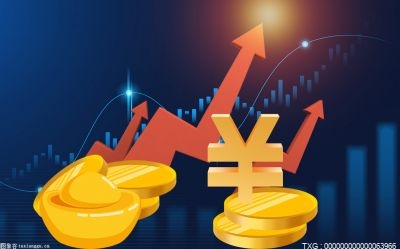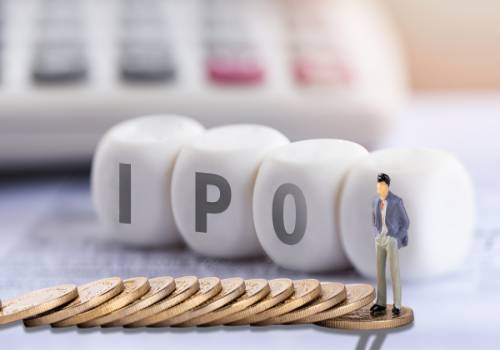来源:市场资讯
绿色资产支持证券对促进绿色发展具有重要意义。随着政策体系的不断健全,中国绿色资产支持证券获得了较大发展。本文对绿色资产支持证券的发展背景和市场状况进行分析,并利用中债绿色债券环境效益信息披露指标体系和中债-绿色债券环境效益信息数据库首次对2016—2022年绿色资产支持证券的环境效益情况进行量化统计。最后本文从绿色资产支持证券市场信用增级体系、信息披露建设、评估认证和产品创新等方面提出相应建议,助力绿色资产支持证券市场的健康高效发展。
 (相关资料图)
(相关资料图)
绿色资产支持证券 环境效益 信息披露 数据库
绿色资产支持证券的发展背景
“双碳”目标下中国发展方式逐步向绿色转型。党的二十大报告强调绿色发展的重要性,提出加快发展方式绿色升级,积极稳妥推进碳达峰、碳中和。绿色发展需要金融体系的大力支持。“双碳”目标提出后,多部门陆续出台相关文件,规范绿色金融的发展,提升金融对绿色领域的支持力度。绿色资产支持证券(ABS)作为绿色金融产品的重要类别,能够较好地满足绿色项目的长期资金需求,盘活企业存量资产,缓解企业融资困难,助力绿色发展。
随着绿色发展理念深入人心,绿色ABS的相关政策法规逐步出台。2010年,人民银行杭州中心支行发布《浙江省金融服务创新指引(试行)》,首次在法律层面提出鼓励绿色资产证券化业务的开展,加速了中国绿色ABS的市场化进程。2015年,国务院发布《生态文明体制改革总体方案》,明确鼓励绿色信贷资产实行证券化。2016年,证监会发布《资产证券化监督问答》,鼓励绿色项目通过绿色资产证券化方式融资。同年,人民银行等七部委出台《关于构建绿色金融体系的指导意见》,推动绿色信贷资产证券化业务常态化发展,提出扩大参与机构范围、规范基础资产遴选、提高绿色信贷ABS市场流动性、加强信息披露管理等举措。2017年,证监会发布《中国证监会关于支持绿色债券发展的指导意见》,明确绿色ABS发行准入管理、上市交易的相关规定。
和普通ABS相比,绿色ABS突出了金融产品的绿色属性。2021年《绿色债券支持项目目录(2021年版)》发布,确定了6大类绿色领域和203个绿色项目,要求包含绿色ABS在内的绿色债券需为符合条件的绿色项目提供资金支持。2022年,《中国绿色债券原则》明确了募集资金投向绿色项目或者偿债来源为绿色项目产生的经营性现金流的ABS都可认定为绿色ABS。同年12月发布的《上海证券交易所资产支持证券挂牌条件确认规则适用指引第4号——特定品种资产支持证券》提出,绿色ABS须符合两项条件之一:一是基础资产全部以绿色项目所产生的收入作为收益支持,二是转让基础资产所取得资金全部用于符合规定条件的绿色产业、绿色项目或绿色经济活动。
绿色ABS的市场发展情况
本文绿色ABS均为贴标绿色ABS,包括交易所的企业ABS、银行间的信贷ABS和资产支持票据(ABN)。
(一)发行规模
绿色ABS发展迅速。根据中债DQ数据库,2016—2022年,绿色ABS的发行规模从67.01亿元增至2074.05亿元,年均增长77.20%(见表1)。2021年和2022年的发行规模先后突破1000亿元和2000亿元。2023年上半年,绿色ABS持续发力,发行规模达1076.33亿元,接近2021年全年的水平。
从产品类别来看,绿色企业ABS全部为私募发行,绿色信贷ABS和绿色ABN既包括私募发行,也包括公募发行。绿色企业ABS和绿色ABN是绿色ABS的主要产品,2016年至2023年上半年的累计发行量分别为2656.87亿元和2461.45亿元;绿色信贷ABS累计发行量最少,为587.93亿元。
分年份来看,绿色企业ABS在2016—2020年的发行规模占比较高,均保持在50%以上;2021年和2022年发行规模占比有所下降,2022年仅为38.60%(见图1)。绿色ABN从2017年开始发行,发行规模占比在2020年出现明显上升,2021年和2022年发行规模占比均超过50%。绿色信贷ASB的发行规模占比在2016年高达39.48%,之后呈下降趋势,2021年开始回升,2022年发行规模占比达11.39%。
(二)行业分布
从行业分布来看,绿色ABS的发行主体主要集中在金融业、公用事业和工业。2016年至2023年上半年,这三个行业绿色ABS的累计发行量分别为2188.58亿元、1872.26亿元和839.64亿元。
(三)债券评级
绿色ABS的发行评级较高,高度集中在AAA级。2016年以来,历年AAA级绿色ABS发行规模占比均在70%以上,2021年高达98.86%。AA+级占比在2017年达到最大值19.55%,其余年份均较小。
从中债隐含评级来看,与发行评级相比,绿色ABS的中债隐含评级较为分散(见图2)。中债隐含评级为AAA-级以上的绿色ABS占比在2019年前不足半数,2019年后均为50%以上,2022年超70%。中债隐含评级为AA+级的绿色ABS占比在2016年高达85.91%,随后有所下降,2022年降至20%。此外,2017年共计有7.68亿元绿色ABS的中债隐含评级为C,占比为15.04%。由此可见,随着绿债市场的完善,近年来绿色ABS的中债隐含评级较初期有明显提高。
(四)期限分布
绿色ABS的期限分布在2021年前后有较大差异。在2021年以前,绿色ABS的期限以中期为主。中期绿色ABS的发行规模占比在2018年高达86.55%。自2021年起,绿色ABS的期限以短期为主。短期绿色ABS的发行规模从2020年的90.73亿元迅速增长至2021年的673.79亿元,同比增长642.63%,增速远大于中期和长期绿色ABS,拉高了短期绿色ABS的发行规模占比。2021年和2022年的短期绿色ABS发行规模占比均超过半数。
(五)发行人结构
绿色ABS的发行主体以国有企业为主。2017年起,国有企业发行规模占比均在60%以上,2021年该占比高达94.95%。
(六)地域分布
绿色ABS的发行地区集中在中东部。除北上广等超一线城市外,一些中部省份发行规模也位居前位。2016年至2023年上半年,上海、河南、广东、北京和安徽的累计发行规模位列前五,分别为1504.07亿元、1331.49亿元、991.11亿元、634.62亿元和239.98亿元。
绿色ABS的环境效益信息披露情况
环境效益信息披露是绿色ABS区别于其他ABS的核心要素,是评估绿色ABS对绿色发展贡献的重要依据,也是提升绿债市场透明度、降低“洗绿”风险的重要手段。环境效益信息披露水平的提升对于促进绿债市场高质量发展具有重要意义,需要科学完善的指标体系及健全的数据库作为支撑。中债绿色债券环境效益信息披露指标体系(以下简称“中债绿债指标体系”)结合相关产业和环保政策以及市场实践,对《绿色债券支持项目目录(2021年版)》中的每一个绿色项目都设计了一组体现其环境效益特点的必选指标和可选指标1。中债-绿色债券环境效益信息数据库集中采集和展示绿色债券的环境效益信息。根据中债绿债指标体系和中债-绿色债券环境效益信息数据库,可对中国绿色ABS的环境效益信息披露情况进行量化评估。
(一)披露只数占比
中债-绿色债券环境效益信息数据库显示,2016—2022年,全市场累计公开发行124只绿色ABS,其中42只在发行前披露了环境效益信息,披露只数占比为33.87%。
2016—2022年,绿色ABS的披露只数占比呈波动上升趋势,在一定程度上反映了市场主体信息披露意识的提升。2022年,绿色ABS的披露只数占比为40.74%,显著高于2017年的水平(7.14%)。
(二)披露完整度和得分情况
根据中债绿债指标体系对绿色ABS发行前的环境效益信息披露情况进行评价。
2016—2022年,绿色ABS的环境效益指标披露完整度平均为10.83%。其中,必选指标的完整度为20.21%,可选指标的完整度为7.53%2。利用中债绿债指标体系对公开发行的绿色ABS进行打分,其中必选指标总分为100分,可选指标加分20分3(见图3)。得分情况呈现波动上升趋势。总得分、必选得分和可选得分均在2021年达到最高值,分别为55.19分、51.61分和3.58分。2022年的总得分、必选得分和可选得分分别为38.52分、37.04分和1.48分。
从募集资金投向来看,2016—2022年共计21只绿色ABS在发行前披露了募集资金投向及金额。募集资金投向清洁能源产业、基础设施绿色升级产业和节能环保产业等三大产业,总金额合计121.74亿元。其中清洁能源产业募投金额位列第一,达72.54亿元,占绿色项目领域募集资金总规模的比例为59.59%。
(三)量化环境效益估算
假设未披露量化环境效益信息债券的单位资金环境效益与已披露债券的单位资金环境效益相同,可计算绿色ABS的环境效益总体情况。单位资金环境效益等于环境效益指标的量化披露数值除以绿色项目总投资。2016—2022年,共计23只绿色ABS披露了量化环境效益指标数值,其中14只同时披露了绿色项目的投资总额,总额达4815.41亿元。通过对这14只绿色ABS的单位资金环境效益的统计,可估算2016—2022年公开发行的绿色ABS资金累计的量化环境效益贡献。
2016—2022年,公开发行的绿色ABS累计支持碳减排312万吨,节约标准煤122万吨、减少二氧化硫排放1.4万吨、减少氮氧化物排放0.3万吨。
支持绿色ABS市场发展的建议
绿色ABS市场发展迅速,2022年的发行规模在全部绿色债券品种中位列第二,仅次于绿色金融债。但和ABS市场整体相比,绿色ABS的容量仍然较小。为挖掘绿色ABS的市场扩容潜力,增强对绿色发展的支持,具体可采取以下措施。
一是完善绿色资产证券化的信用增级体系。绿色ABS在发行时可能会面临基础资产预期现金流不稳定的风险,风险隔离机制进一步加大了ABS的信用风险,因此需要相关机构采用信用增级的方式提升产品信用,扩大产品发行规模。建议拓展信用增级的方式,促进信用增级多元化。出台绿色ABS信用增级业务指引,引导市场机构信用增级的规范化发展。同时,推动信用增级信息的公开披露,规范信息披露的内容和形式,提高信用增级的市场认可度。
二是强化绿色ABS信息披露体系建设。良好的信息披露对于促进绿色ABS的流动性、降低市场风险、促进服务实体经济具有重要作用。建议统一不同品种绿色ABS的信息披露要求。对于底层资产,在穿透登记的基础上探索建立穿透披露机制,提升市场透明度,助力精准评估产品价值。出台完整细化的绿色ABS信息披露操作指引,鼓励发行人按照统一的模板和可扩展商业报告语言(XBRL)方式进行信息披露,提高披露数据的标准性和规范性。
三是推动绿色ABS环境效益信息披露的标准化和规范化。建议采用中债绿债指标体系对绿色ABS在发行前和存续期的环境效益进行披露。中债绿债指标体系采用规范性、兼容性、简洁性、完整性和针对性原则,为新版绿色债券支持项目目录中的每个项目设定了针对性指标,具有较高的科学性和完整性。采用中债绿债指标体系进行环境效益信息披露能够提升披露的统一性和可比性。同时,建议构建统一的绿色数据库,按照中债绿债指标体系集中披露和展示环境效益信息,加强市场对绿色项目的监督以及对环境效益的量化评估。最后,建议发行人公开环境效益的测算方法,指出测算方法在发行前和存续期的一致性,提高不同发行人之间的可比性和同一发行人发行前后的可比性。
四是推动绿色ABS评估认证规范化发展,为绿色ABS提供隐性信用增级。在选聘绿色ABS评估认证机构时探索采用“发行人付费、投资者选择”的模式进行认证与核查。该模式能够阻断评估认证机构和发行人之间的直接利益关联,提升评估认证机构的客观性和中立性,保证认证结果的公允性,推动评估认证市场良性竞争。同时可加强金融科技的应用,鼓励市场机构利用区块链、物联网、人工智能等方式对绿色ABS的发行管理等进行全流程跟踪认证,降低识别认证成本。
五是鼓励绿色ABS的产品创新。可以进一步拓展基础资产的种类,探索对更多不同领域的绿色项目进行资产证券化。促进产品结构和定价更加合理,加强产品分层设计,根据市场不同投资者的风险偏好和对基础资产现金流的分析与预测,丰富绿色ABS的分层结构,满足不同投资者的需求。推进绿色ABS产品的跨市场交易,提升产品流动性。
注:
1.必选指标是该类别项目最具代表性的环境效益指标,可选指标是该类别项目可能产生的其他环境效益指标。
2.没有环境效益信息披露的债券必选完整度和可选完整度都设为0。
3.绿债信息披露完整度得分=必选指标披露得分+可选指标披露得分=∑(投向单个项目实际披露必选指标数量/应披露必选指标数量×100)/投向项目数量+∑(投向单个项目实际披露可选指标数量/应披露可选指标数量×20)/投向项目数量。没有披露环境效益信息的债券完整度得分为0。打分结果仅代表信息披露完整度,不代表债券的绿色程度。
参考文献
[1]姜枫, 张怡超. 绿色ABS融资方式探析[J]. 产业创新研究, 2019(7).
[2]商瑾, 陈莹莹, 梁臻颢. 2022年绿色债券市场运行情况报告[J]. 债券, 2023(4).DOI: 10.3969/j.issn.2095-3585.2023.04.006.
[3]李波, 刘爽. 推动ABS底层资产信息穿透披露[J]. 债券, 2023(5).DOI: 10.3969/j.issn.2095-3585.2023.05.016.
[4]夏慧慧. 绿色资产证券化信用增级的困境与突破探究[J]. 西南金融, 2019(6).
[5]殷振武. 中国绿色资产证券化产品发展现状及问题研究[J]. 上海商业, 2021(12).
[6]赵付玲, 葛佳妹. 助推绿色资产证券化发展[J]. 中国金融, 2022(8).
◇ 本文原载《债券》2023年7月刊
◇ 作者:中央结算公司博士后科研工作站
中国人民银行金融研究所博士后流动站
陈莹莹
◇ 编辑:鹿宁宁 廖雯雯
Research on the Development of Green Asset-Backed Securities Market
Chen Yingying
Abstract
Green asset-backed securities (ABS) are vital to promoting green development. Thanks to an improving policy system, green ABS has made great strides in China. This paper analyzes the development background and market conditions of green ABS and makes the first quantitative statistical assessment on the environmental benefits of green ABS from 2016 to 2022 using the ChinaBond Green Bond Environmental Benefit Disclosure Indicator System and the ChinaBond Green Bond Environmental Benefit Database. This paper ends with suggestions regarding the credit enhancement system, information disclosure development, assessment and certification, and product innovation of the green ABS market, so as to promote healthy and efficient development of the green ABS market.
Keywords
Green asset-backed securities (ABS), environmental benefits, information disclosure, database
The Development Background of Green Asset-backed Securities
China is gradually transitioning to a “green” mode of development under the “carbon peaking, carbon neutrality” goal. The report to the 20th CPC National Congress attached importance to green development, calling for accelerating the upgrading to a model of green development and working actively and prudently toward the goal of reaching peak carbon emissions and carbon neutrality. Green development requires strong support from the financial system. After the “carbon peaking, carbon neutrality” goal was introduced, government agencies issued relevant documents one after another governing the development of green finance and enhancing the financial support for green sectors. As an important category of green financial products, green asset-backed securities (ABS) can better meet the long-term capital requirements of green projects, revitalize the existing assets of enterprises, ease their financing difficulties and give a boost to green development.
With the philosophy of green development deeply rooted in the hearts of the people, the policies and regulations on green ABS have been gradually introduced. In 2010, the Hangzhou Central Sub-branch of the People’s Bank of China (the PBOC) issued the Guidelines for Financial Service Innovation in Zhejiang Province (for Trial Implementation), legislatively encouraging green ABS for the first time and accelerating the marketization of green ABS in China. In 2015, the State Council released the Master Plan for Ecological Conservation System Reform, encouraging the securitization of green credit assets. In 2016, China Securities Regulatory Commission (CSRC) issued the Questions and Answers on ABS Supervision, encouraging green projects to be financed through green ABS. In the same year, seven central authorities including the PBOC issued the Guidelines on Building a Green Financial System to promote the regular development of the ABS business, setting forth such measures as expanding the scope of participating institutions, standardizing the selection of underlying assets, improving the liquidity of the green credit ABS market and strengthening the management of information disclosure. In 2017, CSRC issued the CSRC Guidelines for Supporting the Development of Green Bonds clarifying requirements on the issuer eligibility and public trading of green ABS.
Compared with ordinary ABS, green ABS highlights the green nature of financial products. The Green Bond Endorsed Projects Catalogue (Edition 2021) issued in 2021 identified six categories of green fields and 203 green projects, requiring that green bonds (including green ABS) should provide funding support for eligible green projects. In 2022, the China Green Bond Principles made it clear that the ABS whose proceeds are earmarked for green projects or whose source of debt service is operating cash flows generated by green projects could be identified as green ABS. The SSE Guideline on Application of Confirmation Rules for ABS Listing Conditions No. 4 - Specific Types of ABS issued in December 2022 prescribes that green ABS must meet at least one of two conditions: (1) the underlying assets are all supported by the revenue generated from green projects; or (2) the funds obtained from the transfer of underlying assets are all used for green industries, green projects or green economic activities that meet the prescribed conditions.
Market Development of Green ABS
Any green ABS referred to in this paper means labeled green ABS, including exchange-traded corporate ABS and inter-bank market-traded credit ABS and asset-backed notes (ABN).
i. Issue size
Green ABS is mushrooming. According to the ChinaBond DQ database, the green ABS issuance increased from RMB6,701 million in 2016 to RMB207,405 million in 2022, with an average annual growth rate of 77.20% (see Table 1). The issuance in 2021 and 2022 exceeded RMB100 billion and RMB200 billion, respectively. In the first half of 2023, the green ABS issuance further expanded to RMB107,633 million, close to the annual total of 2021.
From the perspective of product category, all of the green corporate ABS are issued through private placement. Green credit ABS and green ABN are issued through private placement and public offering. Green corporate ABS and green ABN are the primary categories of green ABS, with their total issuance reaching RMB265,687 million and RMB246,145 million respectively from 2016 to the first half of 2023. Green credit ABS recorded the lowest issuance value of RMB58,793 million.
By year, the total issuance of green corporate ABS represented the largest share of above 50% from 2016 to 2020, but that share shrank in 2021 and further fell to 38.60% in 2022 (see Figure 1). Green ABN was first issued in 2017, with the share rising significantly in 2020 and even exceeding 50% in 2021 and 2022. The issuance of green credit ABS accounted for 39.48% in 2016. Then that share shrank before reversing for a pickup in 2021 and hit 11.39% in 2022.
ii. Breakdown by sector
By sector, the green ABS issuers are concentrated in the financial services, utilities and industry. From 2016 to the first half of 2023, the cumulative issuance of green ABS in these three sectors was RMB218,858 million, RMB187,226 million and RMB83,964 million, respectively.
iii. Bond rating
Green ABS ratings are generally high, mostly AAA. Since 2016, over 70% of grade green ABS have been rated AAA, and that percentage even rose to 98.86% in 2021. The percentage of AA+ rating reached a maximum of 19.55% in 2017, with smaller shares in other years.
In terms of ChinaBond market-implied rating (MIR), the ChinaBond MIRs of green ABS are less concentrated than issuance ratings (see Figure 2). Less than half of the green ABS had a ChinaBond MIR of AAA- grade or above before 2019, but that percentage exceeded 50% after 2019 and even got beyond 70% in 2022. The percentage of green ABS with a ChinaBond MIR of AA+ reached 85.91% in 2016, and then decreased to 20% in 2022. In addition, RMB768 million worth of green ABS had a ChinaBond MIR of C, accounting for 15.04%. It is obvious that with the green bond market improved, the ChinaBond MIRs of green ABS have been significantly raised in recent years.
iv. Breakdown by maturity
The maturity mix of green ABSs is quite different before and after 2021. Green ABSs were mainly medium-term before 2021. The medium-term green ABSs accounted for 86.55% of total issuance in 2018. Since 2021, green ABSs have been mainly short-term. The issuance of short-term green ABSs increased rapidly from RMB9,073 million in 2020 to RMB67,379 million in 2021, representing a year-on-year growth of 642.63%, much faster than that of medium-term and long-term green ABSs, driving up the share of short-term green ABSs issued. Short-term green ABS issuance accounted for more than half of the total in 2021 and 2022.
v. Issuer mix
The issuers of green ABS are mainly state-owned enterprises (SOEs). Since 2017, SOEs contributed more than 60% of the green ABSs issued, and that percentage even reached 94.95% in 2021.
vi. Breakdown by geography
Green ABSs are issued mainly in the central and eastern parts of China. In addition to first-tier megacities, such as Beijing, Shanghai and Guangzhou, some provinces in central China also rank high in terms of issuance value. From 2016 to the first half of 2023, Shanghai, Henan, Guangdong, Beijing and Anhui ranked in the top five with cumulative issuance of RMB150,407 million, RMB133,149 million, RMB99,111 million, RMB63,462 million and RMB23,998 million, respectively.
Environmental Benefits Disclosure of Green ABSs
Environmental benefits disclosure is the core element that distinguishes green ABSs from other ABSs. It is an important basis for assessing green ABSs’ contribution to green development, and a crucial instrument to make the green bond market more transparent and reduce the risk of “green washing”. Improving the environmental benefits disclosure is of great significance to high-quality development of the green bond market, which builds on a well-established indicator system and a sound database. ChinaBond Green Bond Environmental Benefit Disclosure Indicator System (“ChinaBond Green Bond Indicator System”) has designed a set of mandatory indicators and optional indicators1that reflect the environmental benefit characteristics of each green project in the Green Bond Endorsed Projects Catalogue (Edition 2021) in line with relevant industrial and environmental protection policies and market practices. ChinaBond Green Bond Environmental Benefit Database centrally collects and displays the environmental benefits information of green bonds. With ChinaBond Green Bond Indicator System and ChinaBond Green Bond Environmental Benefit Database in place, the environmental benefits disclosure of China’s green ABSs is quantitatively assessable.
i. Disclosure rate
According to ChinaBond Green Bond Environmental Benefit Database, a total of 124 green ABSs were publicly offered across the market from 2016 to 2022, of which 42 green ABSs, or 33.87%, disclosed environmental benefits information prior to issuance.
The disclosure rate of green ABSs showed a fluctuating upward trend from 2016 to 2022, which to some certain extent reflected the improvement of market participants’ awareness of information disclosure. 40.74% of green ABSs disclosed their environmental benefits information in 2022, significantly higher than the level in 2017 (7.14%).
ii. Disclosure completeness and score
The environmental benefits disclosure prior to issuance of green ABS is evaluated using the ChinaBond Green Bond Indicator System.
From 2016 to 2022, the disclosure completeness of the environmental benefit indicators for green ABS was 10.83% on average. Among them, the disclosure completeness was 20.21% for mandatory indicators and 7.53% for optional indicators2. The ChinaBond Green Bond Indicator System was used to score publicly offered green ABSs, at a 100-point scale for mandatory indicators and a 20-point scale for optional indicators3(see Figure 3). The scores showed a fluctuating upward trend. The total score, mandatory score and optional score all reached their highest in 2021, at 55.19, 51.61 and 3.58, respectively. The total score, mandatory score and optional score for 2022 were 38.52, 37.04 and 1.48, respectively.
As for the use of proceeds, the issuers of 21 green ABSs disclosed the destinations and amounts of proceeds prior to issuance. Proceeds went to clean energy, green upgrading of infrastructures and energy conservation and environmental protection sectors, with a total amount of RMB12,174 million. The clean energy sector ranked first by the amount of proceeds (RMB7,254 million), accounting for 59.59% of the total funds raised for green projects.
iii. Quantitative estimation of environmental benefits
Assuming that bonds disclosing no quantitative information on environmental benefits produce the same environmental benefits per unit of proceeds as the bonds disclosing quantitative information on environmental benefits, the overall environmental benefits of green ABSs can be calculated. The environmental benefits per unit of proceeds are equal to the disclosed quantitative value of environmental benefit indicators divided by the total investment in green projects. From 2016 to 2022, a total of 23 green ABSs disclosed the values of quantitative environmental benefit indicators, of which 14 green ABSs also disclosed the total investment in green projects, totaling 481.541 billion. By statistically processing the environmental benefits per unit of proceeds of these 14 green ABS, we can estimate the cumulative quantitative environmental benefits contribution of the proceeds from green ABSs publicly offered between 2016 and 2022.
From 2016 to 2022, the publicly offered green ABSs helped reduce 3.12 million tons of carbon emissions, save 1.22 million tons of standard coal equivalent, cut 14,000 tons of sulfur dioxide emissions and slash 3,000 tons of nitrogen oxide emissions.
Suggestions for Supporting the Green ABS Market Development
The green ABS market has developed rapidly. In 2022, green ABSs ranked second among all green bonds by issuance value, second only to green financial bonds. Compared with the broader ABS market, however, green ABSs still have a small capacity. To tap the potential of the green ABS market and strengthen the support for green development, the following measures are recommended.
First,the credit enhancement system for green ABSs should be improved. Green ABS may face the risk of unstable expected cash flows from the underlying assets at the time of issuance, with the risk isolation mechanism further adding to the credit risk of ABSs. Therefore, relevant institutions should provide credit enhancement for products and eventually expand the scale of product issuance. It is suggested to expand the ways of credit enhancement for diversification. Guidelines for credit enhancement of green ABSs should be issued to navigate market players through credit enhancement. Further, the credit enhancement information should be disclosed publicly in standard forms and contents, so as to win broader market recognition of credit enhancements.
Second,efforts should be stepped up to build the green ABS disclosure system. Good information disclosure plays an important role in boosting the liquidity of green ABS, mitigating market risk and better serving the real economy. It is suggested to unify the information disclosure requirements for different types of green ABS. For underlying assets, we should explore establishing a see-through disclosure mechanism based on see-through registration to enhance market transparency and facilitate accurate assessment of product value. Complete and detailed guidelines for green ABS should be issued to encourage issuers to disclose information using standard templates and the eXtensible Business Reporting Language (XBRL), thereby further standardizing data disclosure.
Third,the environmental benefits disclosure of green ABSs should be standardized. It is suggested to use the ChinaBond Green Bond Indicator System to disclose the environmental benefits of green ABSs before and after issuance. The ChinaBond Green Bond Indicator System upholds the principles of standardization, compatibility, simplicity, integrity and pertinence, and sets targeted indicators for each project in the latest version of the Green Bond Endorsed Projects Catalogue, demonstrating a high level of reasonableness and completeness. The ChinaBond Green Bond Indicator System helps improve the uniformity and comparability of environmental benefits disclosures. In addition, it is suggested to build a unified green database to disclose and display environmental benefits information in accordance with the ChinaBond Green Bond Indicator System, strengthen market supervision of green projects and enhance quantitative assessment of environmental benefits. At last, it is suggested that the issuers disclose the measurement methodology for environmental benefits and manifest the consistency of measurement methods before and after issuance, so as to improve the comparability between different issuers and the comparability before and after the issuance by the same issuer.
Fourth,discipline should be brought to the assessment and certification of green ABSs, thus providing implicit credit enhancement for green ABSs. When selecting a green ABS assessment and certification agency, the model of “selection by investors at the cost of issuers” should be adopted for certification and verification. This model can prevent the assessment and certification agency and the issuer from being a direct stakeholder of each other, improve the impartiality and neutrality of the assessment and certification agency, ensure the fairness of the certification results and ensure a level playing field in the assessment and certification market. Further, the FinTech application should be strengthened. Market players should be encouraged to track and authenticate the issuance management of green ABSs using the blockchain, Internet of Things (IoT) and artificial intelligence technologies to reduce the cost of identification and certification.
Fifth,the innovation of green ABS products should be encouraged. It is suggested to introduce more types of underlying assets and explore the securitization of green projects in more fields. We should boost the reasonableness of product structure and pricing, strengthen the tiered design of products and increase the tiers of green ABS according to the risk appetites of different investors in the market and the analysis and forecasts on cash flows from underlying assets, so as to meet the needs of various investors. The cross-market transactions of green ABS products should be promoted to boost product liquidity.
Note:
1. Mandatory indicators are the most representative indicators of environmental benefits in the corresponding category of projects, while optional indicators are measures of other environmental benefits that may be produced in this category of projects.
2. Either mandatory or optional completeness is set at zero for bonds disclosing no environmental benefits information.
3. Green bond disclosure completeness score = mandatory disclosure score + optional disclosure score = ∑ (number of mandatory indicators disclosed for a project/number of mandatory indicators to be disclosed *100)/number of supported projects + ∑ (number of optional indicators disclosed for a project/number of optional indicators to be disclosed *20)/number of supported projects. The completeness score is zero for bonds disclosing no environmental benefits information. The score only represents the completeness level of disclosure, rather than the “green” level of the bond.
References
[1] Jiang Feng, Zhang Yichao. Analysis of Financing Methods of Green ABS [J]. Industrial Innovation, 2019(7).
[2] Shang Jin, Chen Yingying, Liang Zhenhao. Green Bond Market Performance Report 2022 [J]. ChinaBond, 2023(4).DOI: 10.3969/j.issn.2095-3585.2023.04.006.
[3] Li Bo, Liu Shuang. Promoting Look-through Disclosure of Underlying Assets of ABS [J]. ChinaBond, 2023(5).DOI: 10.3969/j.issn.2095-3585.2023.05.016.
[4] Xia Huihui. The Dilemma and Breakthroughs in Credit Enhancement of Green ABS [J]. Southwest Finance, 2019(6).
[5] Yin Zhenwu. Research on the Development Status and Problems of Green ABS Products in China [J]. Shanghai Business, 2021(12).
[6] Zhao Fuling, Ge Jiamei. Boosting the Development of Green Asset-backed Securities [J]. China Finance, 2022(8).
◇ Author from: CCDC Post-Doctoral Research CenterPostdoctoral Research Workstation, Research Institute of Finance and Banking of the PBC
◇ Editors: Lu Ningning, Liao Wenwen
关键词:

-
 轩锋—黄金原油多单你抓住了吗方向不对,努力白费,关注轩锋的朋友应该都知道笔者只做现价单,每天跟
轩锋—黄金原油多单你抓住了吗方向不对,努力白费,关注轩锋的朋友应该都知道笔者只做现价单,每天跟 -
 又一大利好将至,A股再次大反攻?近日,发布了《证券公司核心交易系统技术指标》《期货公司监管数据采集
又一大利好将至,A股再次大反攻?近日,发布了《证券公司核心交易系统技术指标》《期货公司监管数据采集 -
 【世界说】美国学校新课程标准粉饰奴隶制历史 加深学生反非裔意识据阿拉伯半岛电视台报道,7月21日,在美国犹他州举行的一次新闻发布会
【世界说】美国学校新课程标准粉饰奴隶制历史 加深学生反非裔意识据阿拉伯半岛电视台报道,7月21日,在美国犹他州举行的一次新闻发布会 -
 财信发展董秘回复:对于该事项公司将保持与控股股东的沟通,如有进一步的进展将及时发布公告财信发展(000838)08月17日在投资者关系平台上答复了投资者关心的问题。
财信发展董秘回复:对于该事项公司将保持与控股股东的沟通,如有进一步的进展将及时发布公告财信发展(000838)08月17日在投资者关系平台上答复了投资者关心的问题。 -
 宾语补足语什么意思(宾语补足语)1、简单举例说明:Igivehimabook 我给他一本书。2、I(主语)give(谓
宾语补足语什么意思(宾语补足语)1、简单举例说明:Igivehimabook 我给他一本书。2、I(主语)give(谓
-
轩锋—黄金原油多单你抓住了吗
2023-08-18 08:37:50
-
又一大利好将至,A股再次大反攻?
2023-08-18 08:37:18
-
【世界说】美国学校新课程标准粉饰奴隶制历史 加深学生反非裔意识
2023-08-18 08:37:32
-
财信发展董秘回复:对于该事项公司将保持与控股股东的沟通,如有进一步的进展将及时发布公告
2023-08-18 08:26:10
-
宾语补足语什么意思(宾语补足语)
2023-08-18 08:29:54























 营业执照公示信息
营业执照公示信息